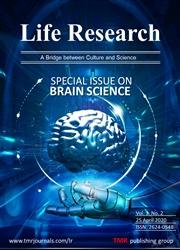Risk behaviours associated with HIV and AIDS among couples in Rwamiko Sector, Gicumbi District, Rwanda
引用次数: 0
Abstract
Background: Risk behaviours have been linked to the spread of the Human Immunodeficiency Virus (HIV) epidemic in both urban and rural areas. Despite the progress made in the fight against HIV, it remains a public health concern worldwide. Risk behaviours such as not using condoms, having multiple sexual partners, and engaging in early sexual activity increase the risk of HIV infection. Therefore, it is important to assess these risk behaviours and understand the relationship between different factors and HIV, specifically among couples, in order to better understand the dynamics of the epidemic. The main objective of this study was to assess risk behaviours for HIV and AIDS among couples in Rwamiko sector, Gicumbi District, and suggest appropriate interventions for this group. Methods: This cross-sectional survey aimed to assess associated HIV and AIDS risk behaviours among couples in Rwamiko Sector, Gicumbi District, in order to determine the dynamics of the epidemic in this group and suggest appropriate interventions. Data was collected using a self-administered questionnaire and a multistage cluster random sampling technique. The collected data was then computed, analyzed, and presented in the form of tables and figures. Descriptive statistics were used to analyze all variables. Multivariate logistic regression was used to calculate odds ratios and 95% confidence intervals (CI) to investigate the relationship between the assessed factors, such as independent and dependent variables. The association between the studied factors was described using odds ratios with 95% CIs. Results: The majority of respondents were in the age group of 30–39 years. All respondents were married, and approximately 45% had completed primary education. The majority of respondents were unemployed. Respondents reported receiving HIV information from multiple sources, including radio, TV, films, school, church, health workers, parents, and friends. The findings of this study showed that some participants had knowledge about HIV transmission and prevention, while others did not. The proportion of respondents with a high level of HIV and AIDS knowledge was 30.61% (n = 60), while moderate knowledge accounted for 53.57% (n = 105). Furthermore, the proportion of respondents with a low level of knowledge on HIV and AIDS was 15.81% (n = 31). The attitude towards HIV and AIDS was positive for 58.16% (n = 114) of respondents, while 41.83% (n = 82) had a negative attitude. None of the respondents reported using injection drugs. Significant associations were found between age ( P -value = 0.002, odds ratio (OR) = 3.4, 95% CI = 1.59–7.67), gender (p=0.001, OR=2.6, 95% CI=1.44–4.68), and alcohol consumption. There was also an association between age ( P = 0.001, OR = 5.13, 95% CI = 2.04–12.91) and having multiple sexual partners. Conclusion: The majority of couples in Rwamiko Sector, Gicumbi District have a moderate level of knowledge and a positive attitude towards HIV and AIDS. However, the proportions of respondents with a low level of knowledge and a negative attitude should not be overlooked. The results of this study suggest the need to improve communication messages related to HIV, its transmission risks, and safer sexual behavior, particularly among couples in Rwamiko Sector, Gicumbi District.卢旺达吉库姆比区鲁瓦米科区夫妇中与艾滋病毒和艾滋病相关的风险行为
背景:危险行为与人体免疫缺陷病毒(艾滋病毒)流行病在城市和农村地区的蔓延有关。尽管在防治艾滋病毒方面取得了进展,但它仍然是全世界关注的公共卫生问题。不使用避孕套、拥有多个性伴侣和过早进行性活动等危险行为增加了感染艾滋病毒的风险。因此,必须评估这些危险行为,了解不同因素与艾滋病毒之间的关系,特别是夫妻之间的关系,以便更好地了解这一流行病的动态。本研究的主要目的是评估Gicumbi区Rwamiko区的夫妇感染艾滋病毒和艾滋病的风险行为,并为这一群体提出适当的干预措施。方法:本横断面调查旨在评估吉贡比区鲁瓦米科区夫妇之间的相关艾滋病毒和艾滋病风险行为,以确定该群体中的流行病动态,并提出适当的干预措施。数据收集采用自填问卷和多阶段整群随机抽样技术。然后对收集到的数据进行计算、分析,并以表格和图表的形式呈现。采用描述性统计对所有变量进行分析。采用多因素logistic回归计算比值比和95%置信区间(CI),探讨自变量和因变量等评价因素之间的关系。研究因素之间的关联用95% ci的比值比来描述。结果:大多数受访者年龄在30-39岁之间。所有受访者都已婚,约45%完成了初等教育。大多数受访者都没有工作。答复者报告说,他们从多种渠道获得艾滋病毒信息,包括广播、电视、电影、学校、教会、卫生工作者、父母和朋友。这项研究的结果表明,一些参与者了解艾滋病毒的传播和预防,而其他人则没有。调查对象对HIV / AIDS知识水平较高的占30.61% (n = 60),中等程度的占53.57% (n = 105)。此外,受访者对HIV和AIDS知识水平较低的比例为15.81% (n = 31)。58.16% (n = 114)的受访者对HIV / AIDS持肯定态度,41.83% (n = 82)的受访者对HIV / AIDS持否定态度。没有答复者报告使用注射毒品。年龄(P值= 0.002,比值比(OR) = 3.4, 95% CI= 1.59-7.67)、性别(P =0.001, OR=2.6, 95% CI= 1.44-4.68)和饮酒之间存在显著关联。年龄(P = 0.001, OR = 5.13, 95% CI = 2.04-12.91)与多个性伴侣之间也存在关联。结论:Gicumbi区Rwamiko区大多数夫妻对HIV / AIDS有中等程度的认知和积极的态度。然而,受访者的知识水平低,态度消极的比例不容忽视。这项研究的结果表明,需要改善与艾滋病毒、其传播风险和更安全的性行为有关的沟通信息,特别是在Gicumbi区Rwamiko区的夫妇之间。
本文章由计算机程序翻译,如有差异,请以英文原文为准。
求助全文
约1分钟内获得全文
求助全文

 求助内容:
求助内容: 应助结果提醒方式:
应助结果提醒方式:


